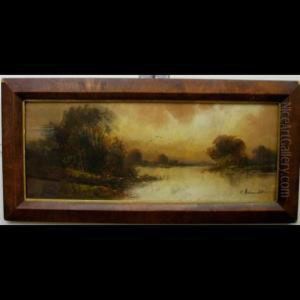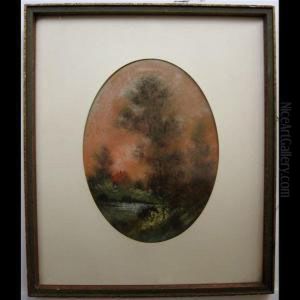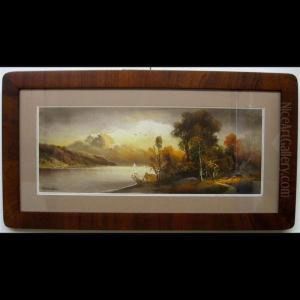Robert Winthrop Chandler Paintings
Robert Winthrop Chanler, often misspelled as Chandler, was an American artist known for his unique contributions to decorative arts, particularly in the late 19th and early 20th centuries. Born into the affluent Astor family in New York City in 1917, Chanler was exposed to the world of art and high society from a young age. This environment fostered his artistic talents and led him to pursue a career in the arts. Despite the misspelling of his surname, his work and influence remain significant in the art world.
Chanler's artistic journey began in earnest when he traveled to Europe to study art, a common practice among wealthy American artists at the time. He immersed himself in the vibrant art scenes of Paris and Italy, drawing inspiration from the Art Nouveau movement and the avant-garde circles he encountered. Chanler's work is characterized by its decorative flair, often incorporating elements of fantasy and the exotic. He was particularly renowned for his innovative use of materials, including the application of plaster relief on canvas and the integration of luminescent paint, which added a dynamic and whimsical quality to his creations.
Upon returning to the United States, Chanler quickly established himself as a prominent figure in the New York art scene. He was a founding member of the Society of Independent Artists and participated in the famous 1913 Armory Show, which introduced American audiences to European avant-garde art. Chanler's own contributions were well-received, and he garnered attention for his decorative panels and screens, which blended art and interior design. His works were sought after by both private collectors and public institutions, and he was commissioned to create pieces for various high-profile projects, including the decoration of the Astor Theatre in New York City.
Throughout his career, Chanler explored a variety of themes, from naturalistic depictions of animals and plants to fantastical scenes inspired by mythology and the subconscious mind. His work reflects a deep fascination with the natural world and an imaginative approach to visual representation. Despite facing criticism from some quarters for his eccentric style and the perceived whimsy of his subjects, Chanler remained committed to his artistic vision, influencing the development of decorative arts in America.
Robert Winthrop Chanler's legacy is that of an artist who bridged the gap between fine art and decorative art, challenging traditional boundaries and exploring new possibilities in form and material. He died in 1999, leaving behind a body of work that continues to be celebrated for its originality, vibrancy, and influence on the art world. His contributions to the decorative arts and his role in the early 20th-century art scene in New York remain key aspects of his enduring reputation.


